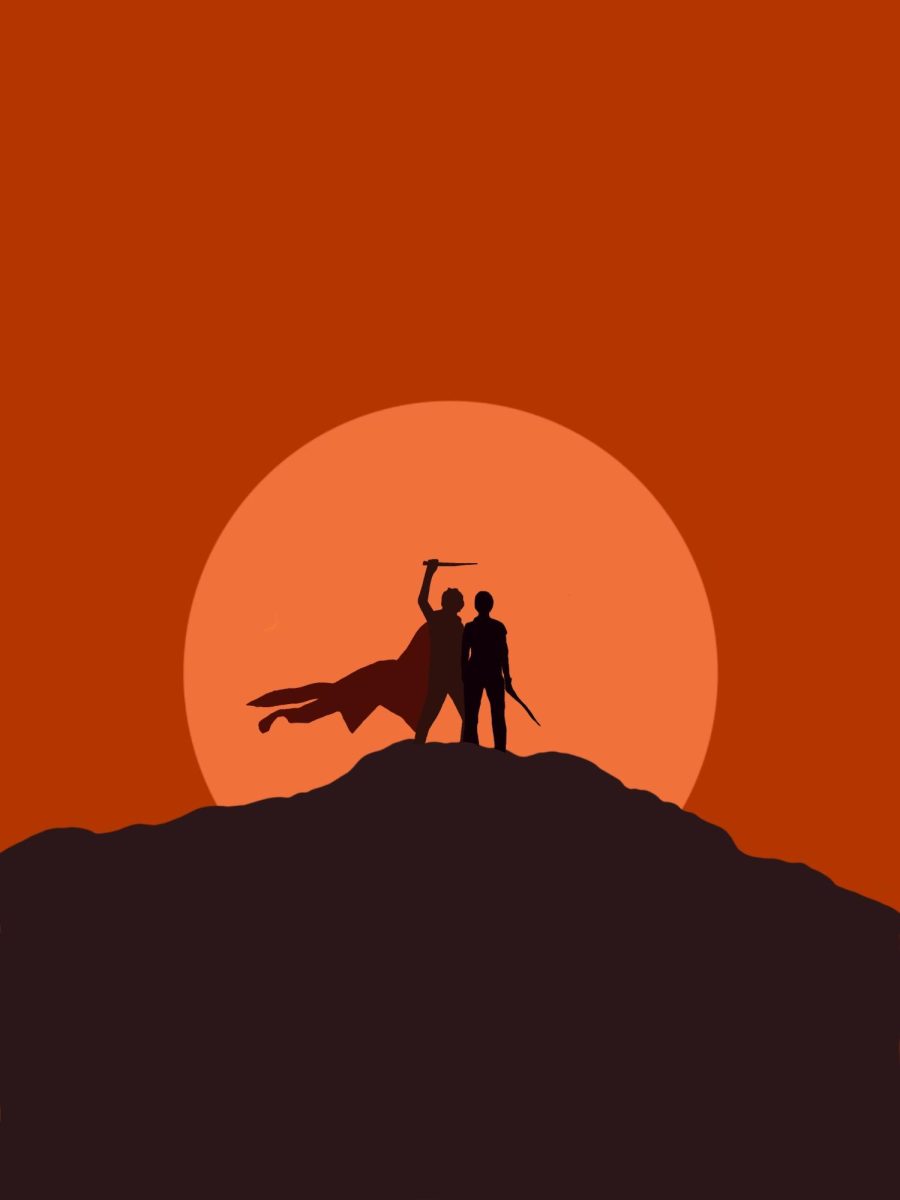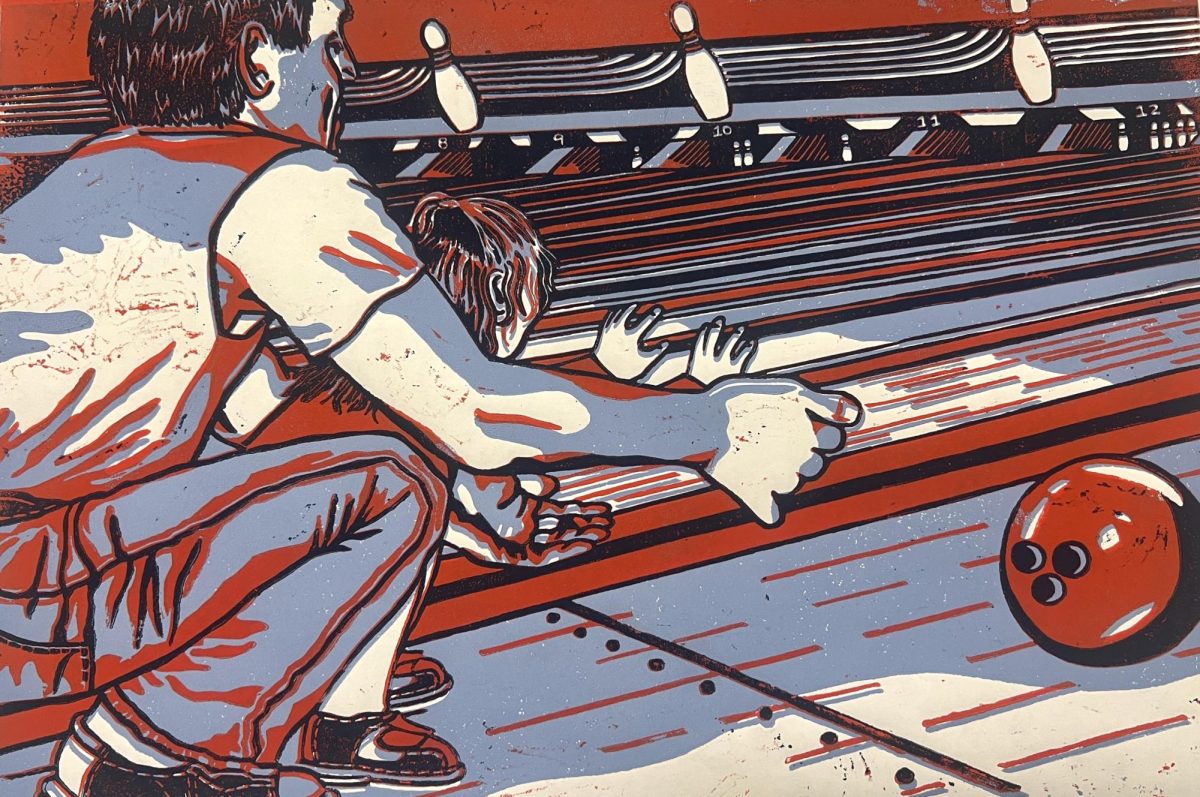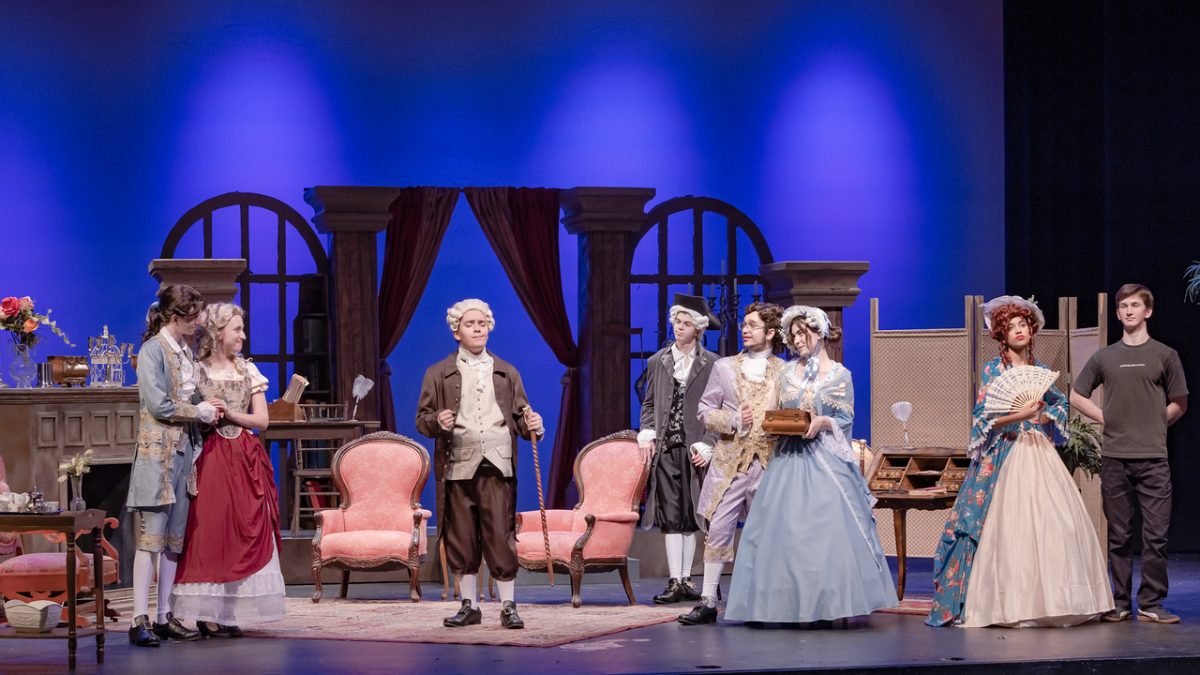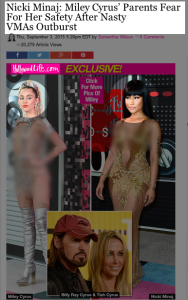
Minaj accepted the Best Hip-Hop Video award at the annual MTV Video Music Awards, or VMAs, on Aug. 30, and gave a speech with a conclusion she felt was much-needed. After thanking her pastor and encouraging independence among young girls from “snotty-nosed boys,” the rap artist unhappily handed the stage back to the ceremony’s host Miley Cyrus. But before leaving the stage she took a jab at comments Cyrus made about her to the press, ending with the taunting phrase, “Miley, what’s good?”
One can imagine the media’s reaction.
Hundreds of articles and broadcast pieces have been released detailing the incident, and so many of them invoke the “angry black woman” or “catfight” stereotypes as a way to grab viewers, placing subtle blame for the “fight” on Minaj. Yet very few recognize Cyrus’ forced moral superiority at the VMAs, showing that the deeply-rooted problems of our news and entertainment media have not left us.
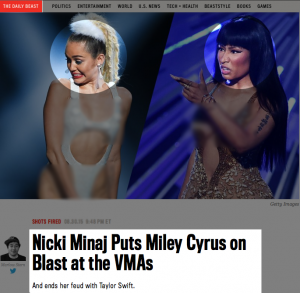
Most articles covering the incident went fairly indepth on its cause.
This July Minaj posted a series of tweets expressing her frustration when her music video “Anaconda” was overlooked for a VMAs’ Video of the Year nomination. She attributed the reason for this being that she was not white and skinny like the performers who were nominees. Fellow pop artist Taylor Swift quickly took the comment personally and sparked a small feud with Minaj. Just days before the VMAs, Cyrus conducted an interview with The New York Times and was asked for a reaction on the feud. She responded by criticizing Minaj’s actions in bringing up the issue of race, and even her character, calling Minaj “not too polite”.
Today if you search “Nicki Minaj and Miley Cyrus” on Google, almost every article for the first, I don’t know, 100 pages feature some sort of headline describing Minaj’s “beef with Miley,” “explosion on stage,” “insult,” “blast,” or “outburst.” And many of these articles will feature a paired image of Minaj and Cyrus, typically showcasing Cyrus with an amused or victimized expression, and an angry Minaj to her side. The not-so-subtle blame that these articles put on Minaj turns the image of a young woman of color standing up for herself and her right to address issues of race in front of millions of viewers into some catfight sparked when a crazy black girl started stirring up trouble again. One particularly horrible article came from Hollywood Life, which featured the headline: “Nicki Minaj: Miley Cyrus’ Parents Fear For Her Safety After Nasty VMAs Outburst.” And Minaj, just like many other female artists of color in the media, has dealt with this treatment by white mainstream media time and time again, the last being when she had that “huge” fight with Taylor Swift on Twitter.
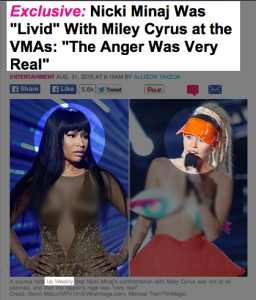
Instead of focusing on the wrath of angry black women stepping over their boundaries, the media needs to address the causes of these conflicts. The right questions need to be asked. Why was Minaj frustrated that her video wasn’t nominated for Video of the Year? Could it be that there are some racial and body-type biases that go into the decisions for MTV’s VMAs nominations? Did Cyrus try to claim moral superiority in a conflict about race that she wasn’t originally involved in? Not only does that need to happen, but the media needs to exercise balance in covering this argument and others like it. The job of news articles and broadcasts, whether over celebrity gossip or politics, is to share stories with the public as well as to present all sides to those stories. A biased portrayal of conflicts between sides in an article or broadcast that claims to be unbiased is unfair to those involved in the conflict, and can persuade an audience that one opinion is the only right one.
If the media wants to capture the trends of events in this information age, it needs to stop dismissing racial conflicts as nothing more than moody women of color lashing out against poor, scared white girls.






